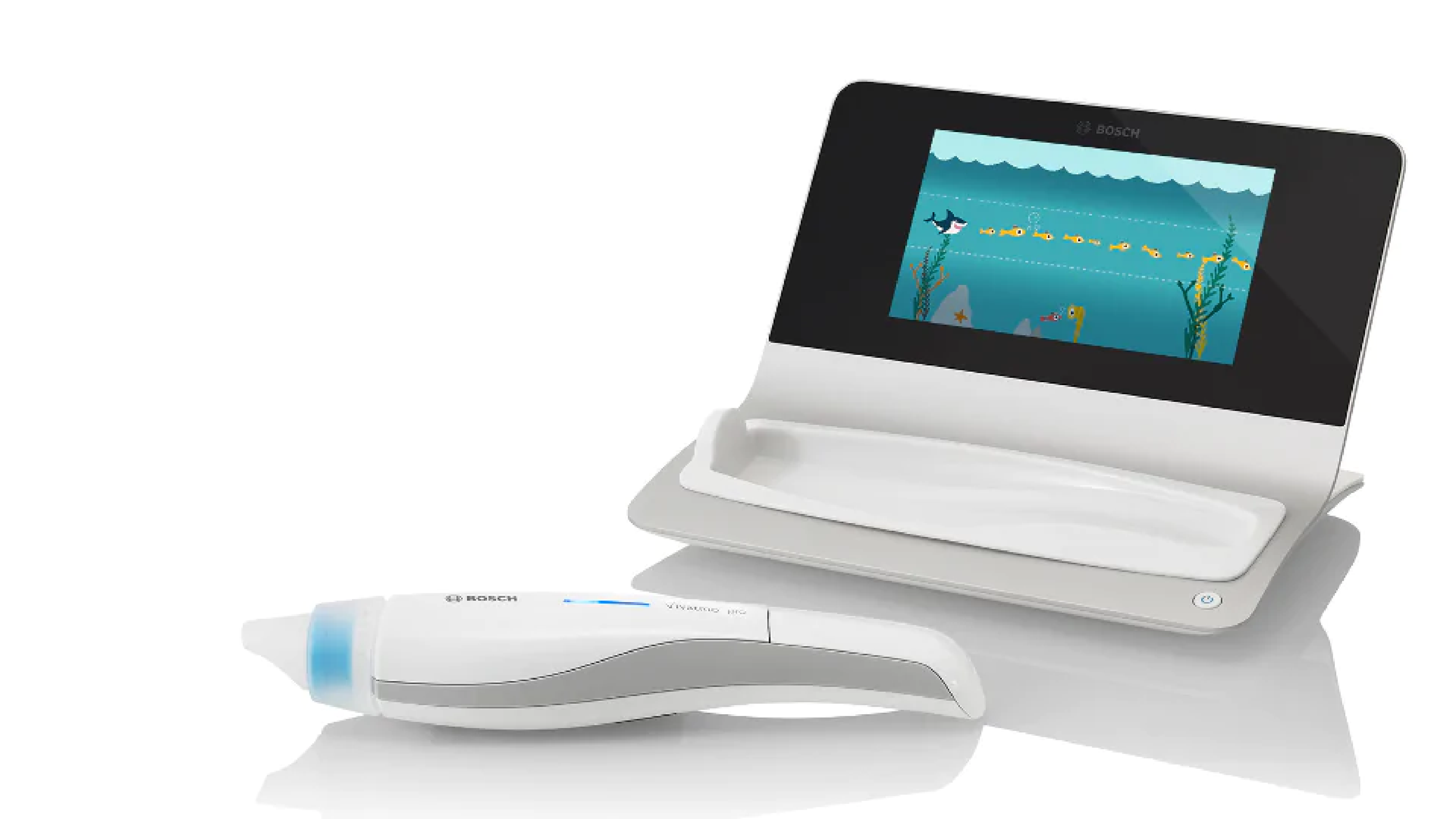Designing a device for measuring and monitoring nitric oxide in the bronchi
I worked on this project when I was working for the product consultancy Kinneir Dufort. The goal for the client, Bosch, was to help doctors test patients when diagnosing asthma.
The Context
While working at the product design consultancy Kinneir Dufort, I collaborated with Bosch on the design of a medical device to help doctors diagnose asthma more accurately.
The goal was to develop a handheld digital device that measures nitric oxide levels in patients’ breath, providing real-time data through a connected app for doctors.
The Challenge
The challenge lay in creating a system that was:
Accurate and intuitive for doctors to use in clinical settings.
Engaging and non-threatening for patients, particularly children.
Seamlessly integrated across hardware, software, and interaction design.
For children, the diagnostic experience could be intimidating, so the design needed to reduce anxiety while still ensuring accurate test results.
The Solution
We designed and tested a handheld digital device that patients could inhale and blow into while interacting with a companion desktop or tablet app used by doctors.
To make the experience more child-friendly, I designed a playful game interface where blowing into the device controlled a shark on the screen:
Blowing with too much intensity caused the shark to be caught by a net.
Blowing too softly resulted in the shark being eaten by an orca.
Blowing at the right intensity allowed the shark to eat fish successfully.
Children quickly understood the visual feedback and were highly motivated to “play the game” correctly, which aligned perfectly with the breathing strength required for accurate measurements.
As part of the project, I designed:
The desktop app interface used by clinicians.
The interactive game for children.
The light and feedback patterns on the handheld device to guide breathing.
The Process
During the discovery phase, we explored different technologies and device formats through concept testing and stakeholder workshops. We conducted focus groups with doctors and asthma patients to understand their needs, challenges, and expectations.
Working as part of the UX team, I collaborated closely with product designers and human factors specialists to ensure both usability and clinical safety were at the core of every design decision.
Outcomes
Increased test accuracy through improved user understanding of correct breathing technique.
Higher engagement and compliance among children, testers wanted to continue playing after the session ended.
Reduced anxiety and improved patient experience in clinical environments.
Seamless cross-device interaction between the handheld sensor and the clinician’s app.
Validated through user testing with both children and doctors, informing final design refinements.





